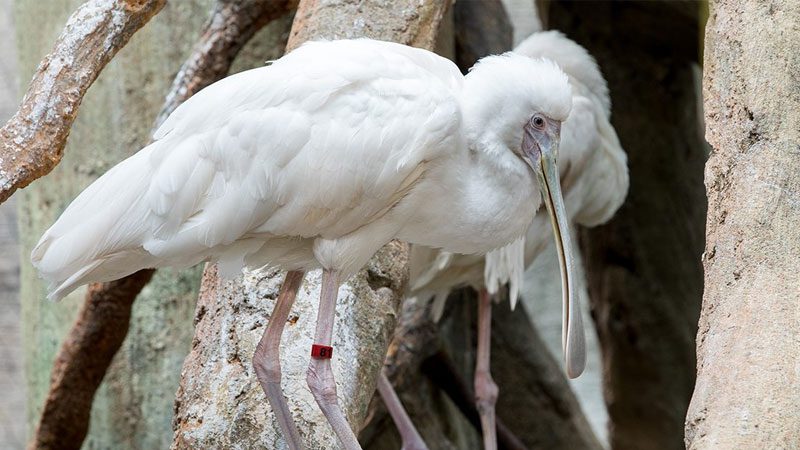Welcome to Lincoln Park Zoo’s new web app! Share your feedback

African Spoonbill
Regenstein African Journey
Did You Know?
- These birds feed by swinging their spoon-shaped bill side-to-side in shallow water and snapping it shut when they sense prey.
- Pairs of African spoonbills court each other by preening and building nests.
- African spoonbills are threatened by the drainage of wetlands in some areas. They are particularly vulnerable in Madagascar, as some specific breeding colonies have been destroyed there. However, they currently have stable populations.
Don’t See the Animals?
Why aren’t animals visible at all times? To promote positive animal welfare, we provide animals with choices. They can choose to spend time in areas that are out of public view.

Take an Animal Home with You
Overview
Scientific Name: Platalea alba
Class: Birds
Diet: Small fish and aquatic invertebrates, like crayfish and water beetles
Range: Sub-saharan Africa
Endangered Status: Least Concern
More Information
African spoonbills are medium-sized wading birds in the same family as ibises. Males and females alike have white plumage and red-orange legs. These birds live in breeding colonies containing up to 250 pairs and often build nests in trees with other species nearby, such as herons and cormorants. Outside of the breeding season, they remain in groups of three to 30 individuals. Little is known about their migration patterns, but they may move in response to local rainfall.
The birds favor lakes, river oxbows, and islands of vegetation for nesting. Their nests are constructed from sticks and reeds and often built over water on partially submerged trees. Females lay three or four eggs per clutch and both parents incubate them for around 23 days. Chicks fledge around 50 days after hatching and become adults at age 3.
